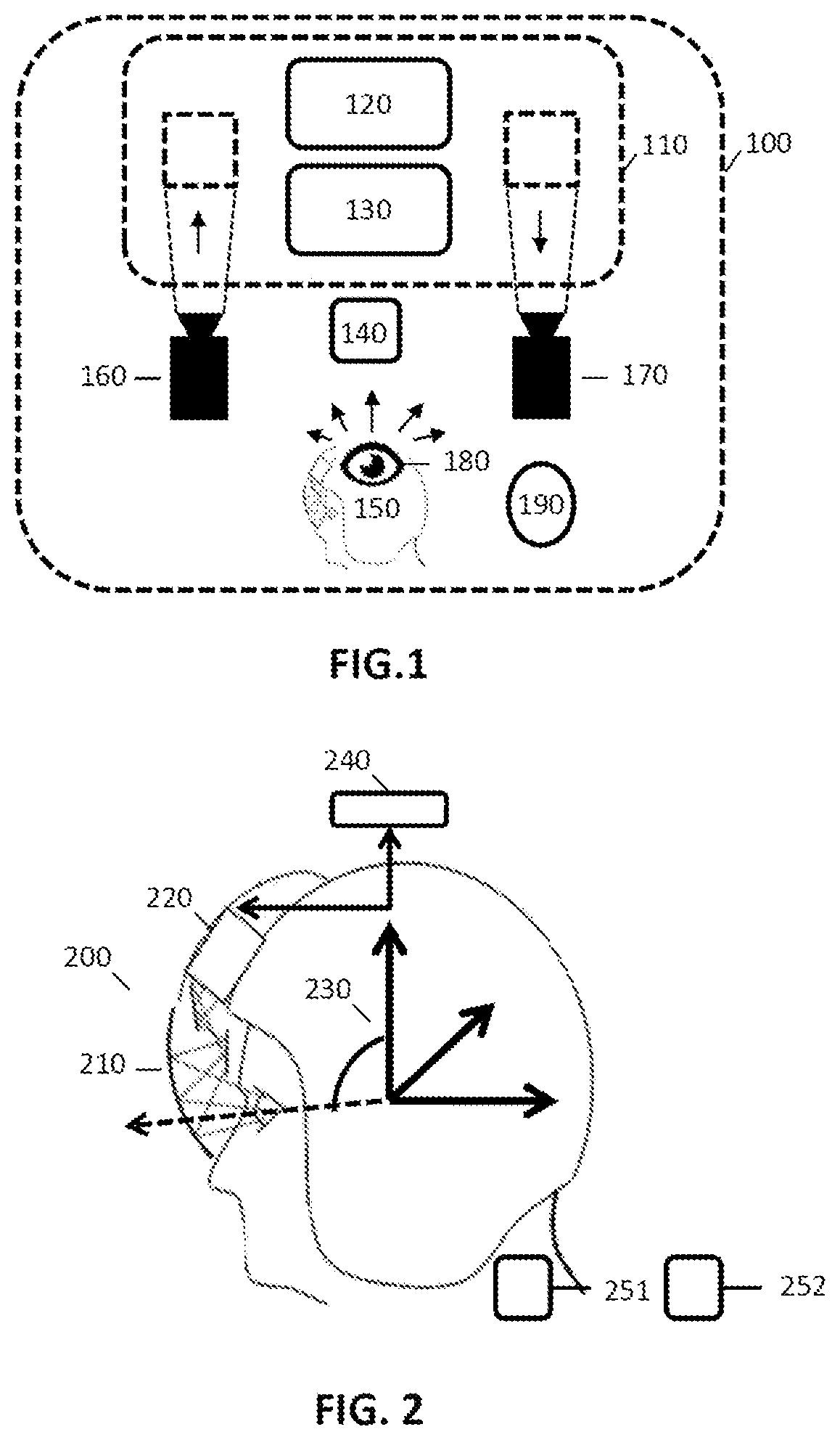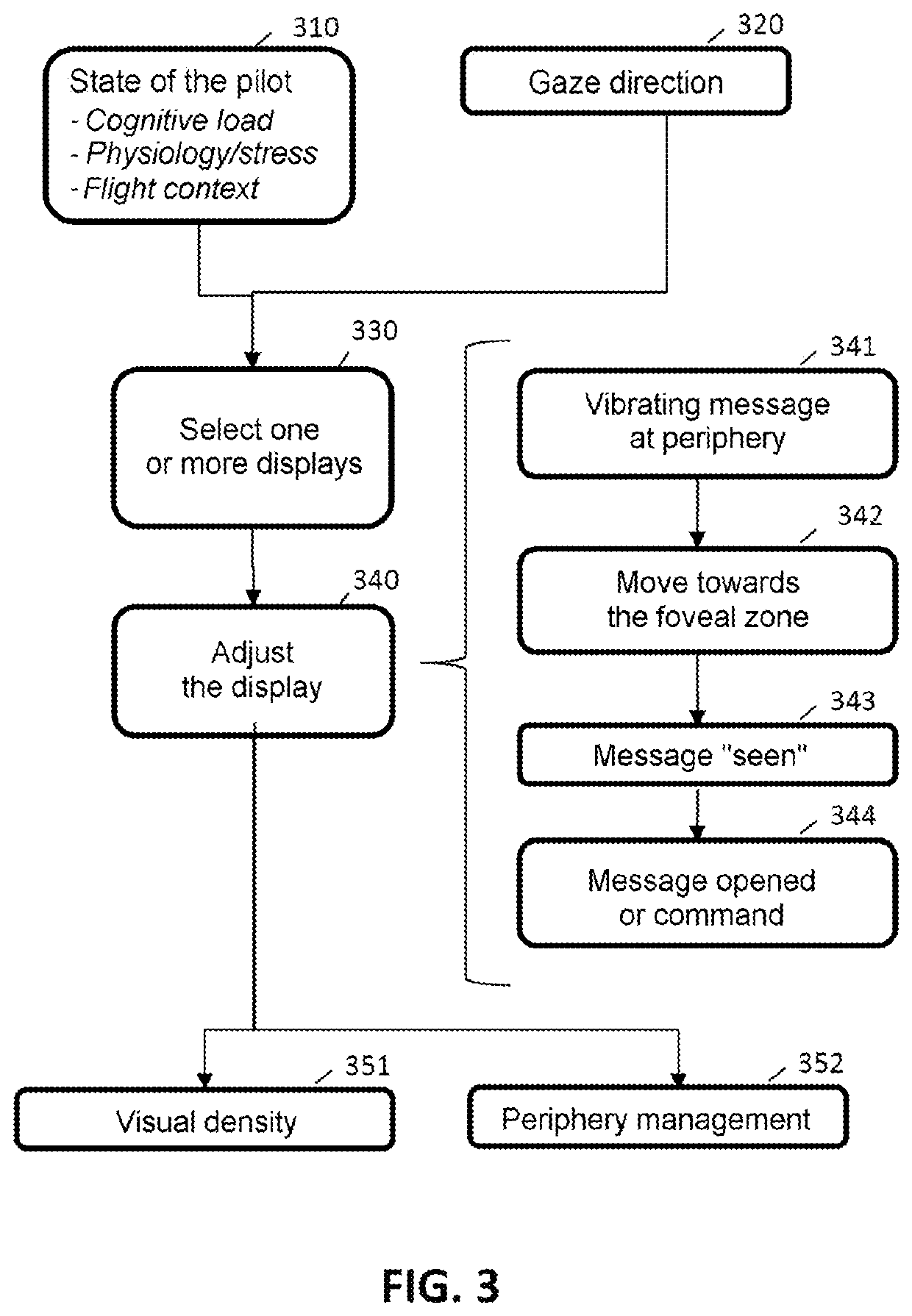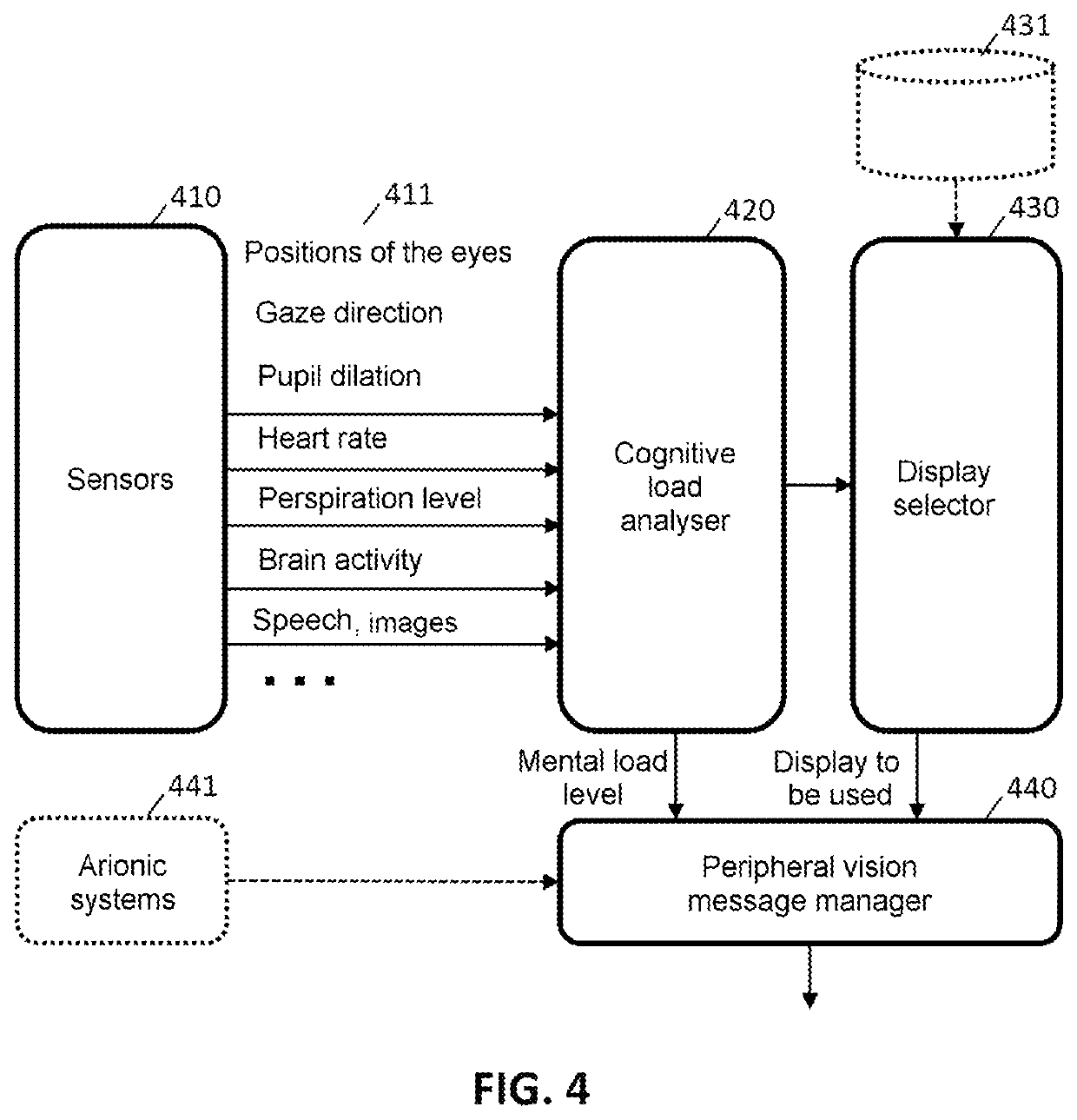Peripheral vision in a human-machine interface
a human-machine interface and peripheral vision technology, applied in the field of display methods and systems, can solve the problems of pilots overloaded or distracted by other tasks, not taking note of important information, human-machine interfaces are increasingly complex, etc., to improve pilots' ability to concentrate on the actual piloting, simplify human-machine interactions, and relieve pilots of tedious manipulations
- Summary
- Abstract
- Description
- Claims
- Application Information
AI Technical Summary
Benefits of technology
Problems solved by technology
Method used
Image
Examples
Embodiment Construction
[0025]According to the embodiments of the invention, an aircraft may be a commercial, military or cargo aeroplane, an autonomous or remotely piloted drone, a helicopter, or any other transport means able to use a human-machine interface. The invention is not limited to aeronautical applications: the embodiments may be applicable to other types of vehicle (e.g. car, lorry, bus, train, boat, etc.).
[0026]The term “display device” manipulated by the invention denotes any display system interspersed or inserted between the visual system (i.e. the eyes) of a user (e.g. surgeon, pilot, computer scientist, etc.) and his external environment (which therefore forms a ‘visual background’).
[0027]The ‘field of view’ literally denotes the portion of space seen by an eye. An eye perceives light, colours, shapes, textures, etc. in this spatial zone. By extension, the two eyes perceive a portion of space stereoscopically. Vision may be of various types: monocular or binocular. This field of view con...
PUM
 Login to View More
Login to View More Abstract
Description
Claims
Application Information
 Login to View More
Login to View More - R&D
- Intellectual Property
- Life Sciences
- Materials
- Tech Scout
- Unparalleled Data Quality
- Higher Quality Content
- 60% Fewer Hallucinations
Browse by: Latest US Patents, China's latest patents, Technical Efficacy Thesaurus, Application Domain, Technology Topic, Popular Technical Reports.
© 2025 PatSnap. All rights reserved.Legal|Privacy policy|Modern Slavery Act Transparency Statement|Sitemap|About US| Contact US: help@patsnap.com



